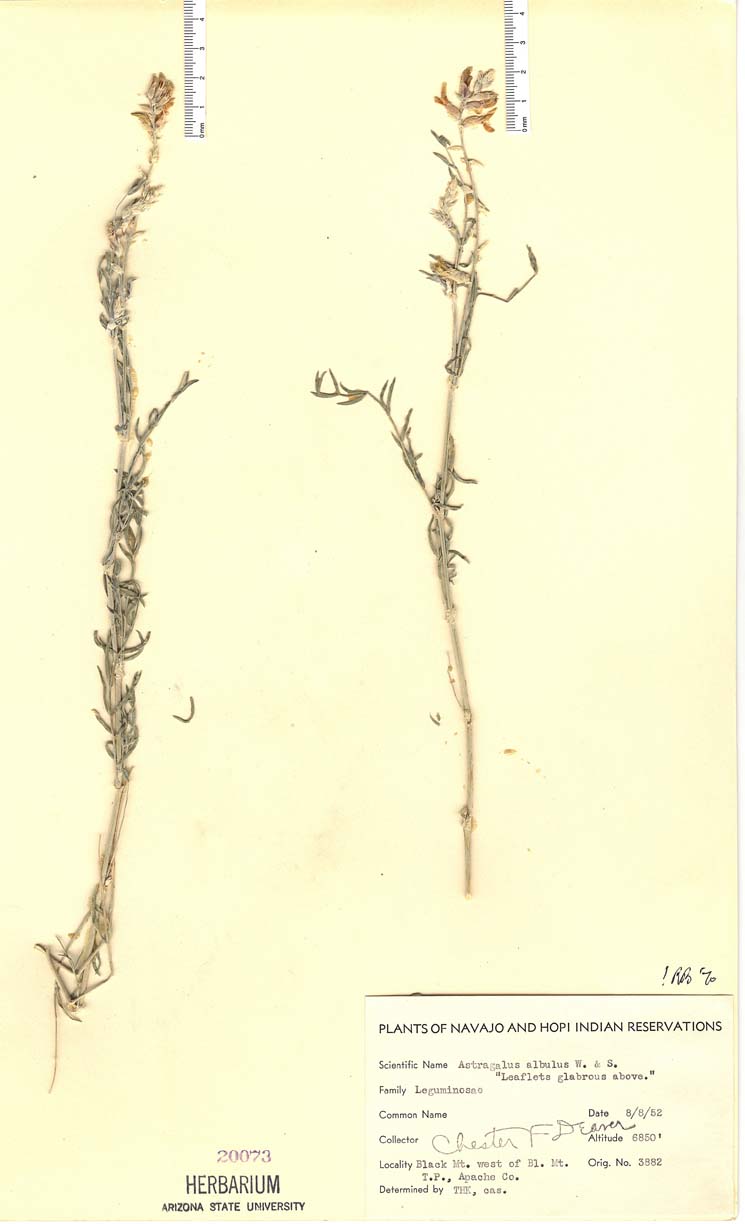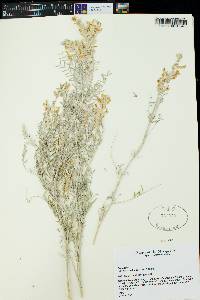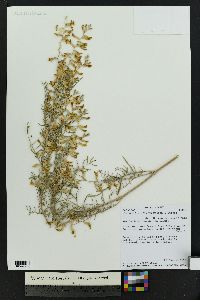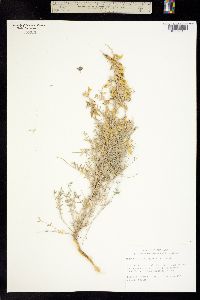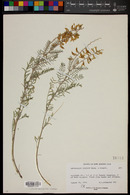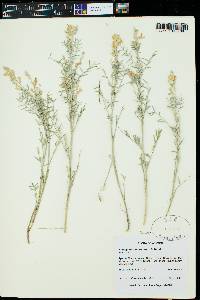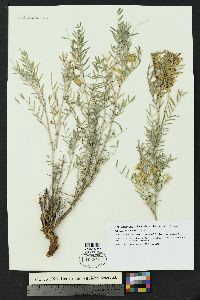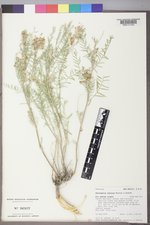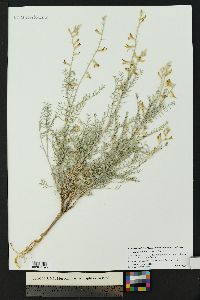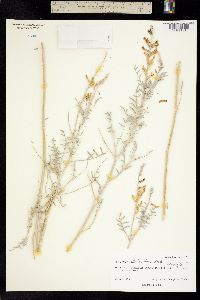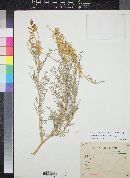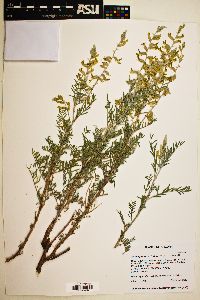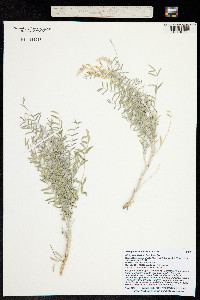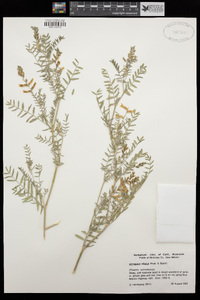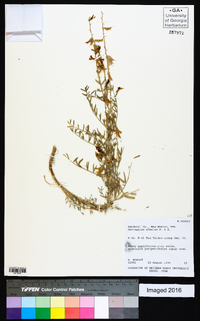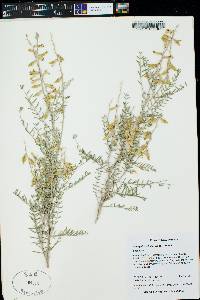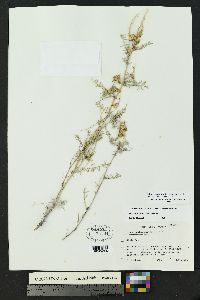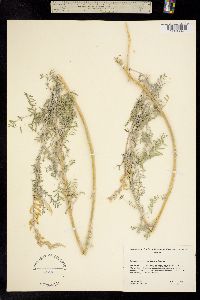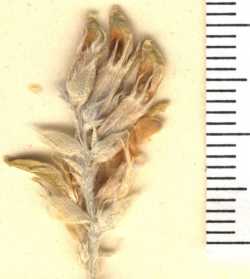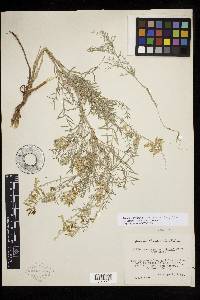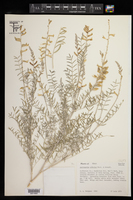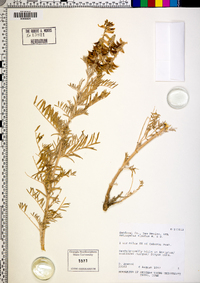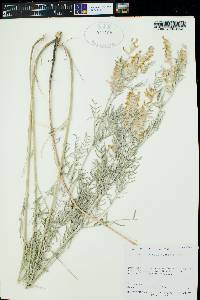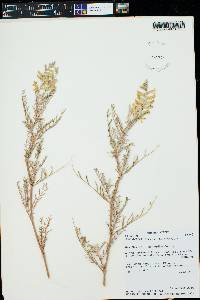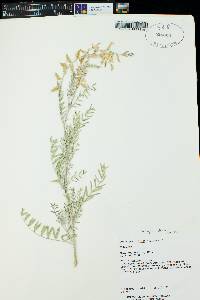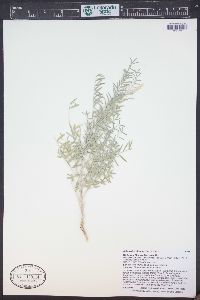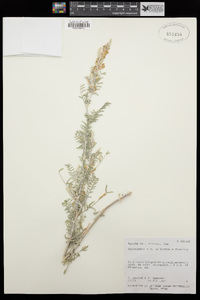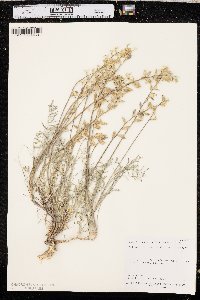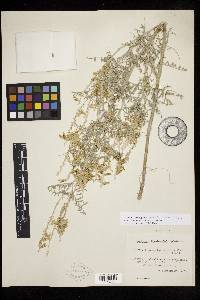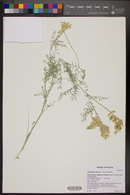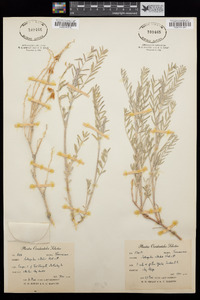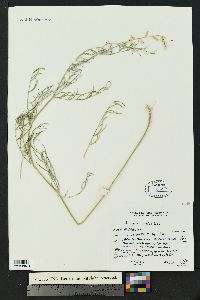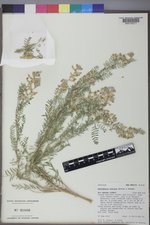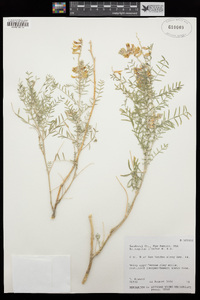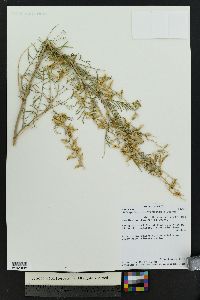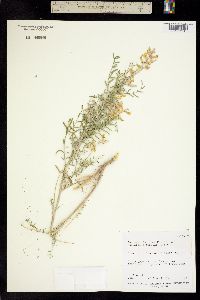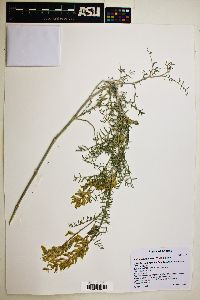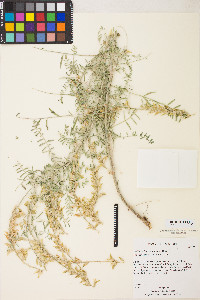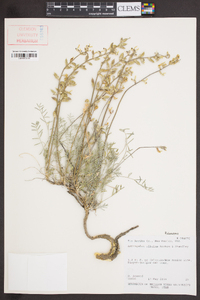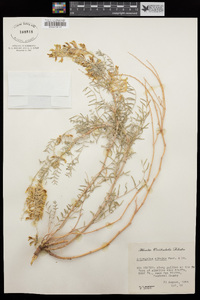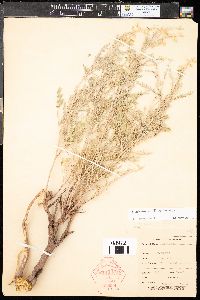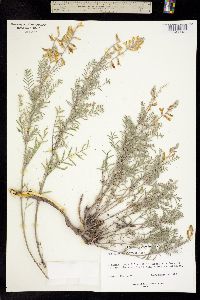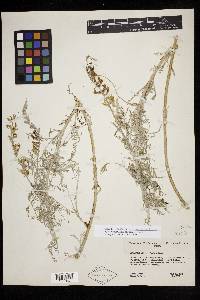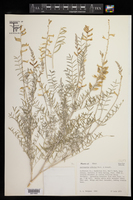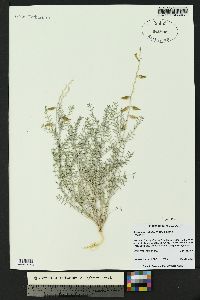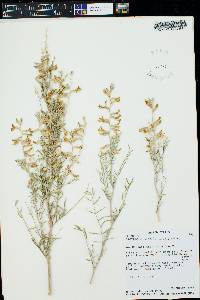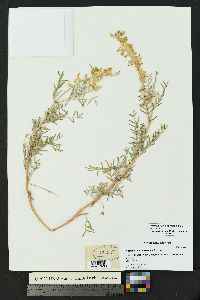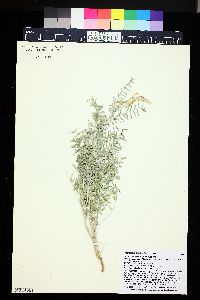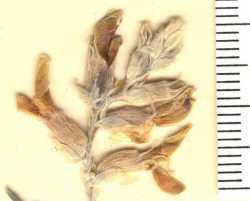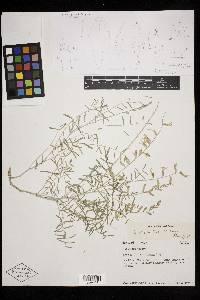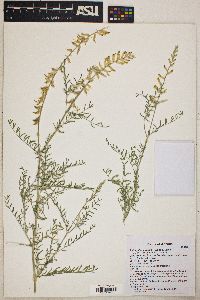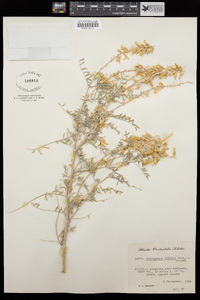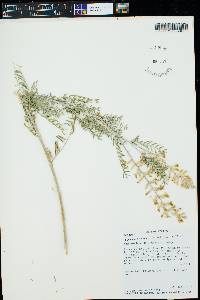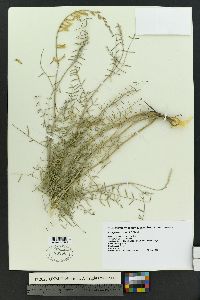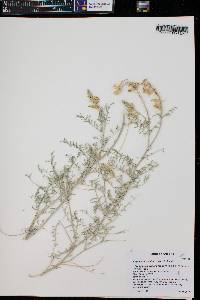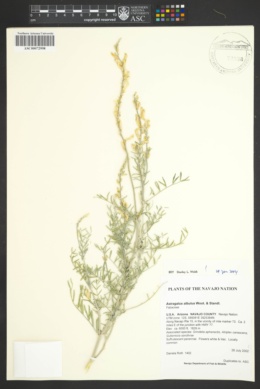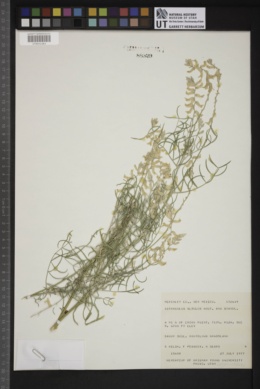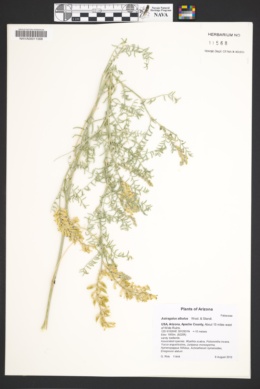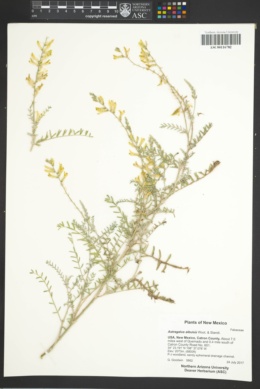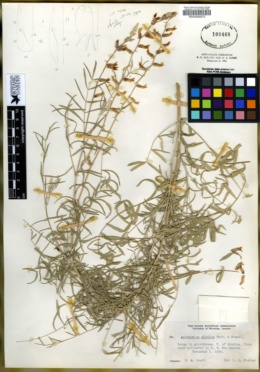
|
|
|
|
Family: Fabaceae
Cibola Milk-Vetch, more...cibola milkvetch
|
Heil et al 2013, Allred and Ivey 2012 Duration: Perennial Nativity: Native Lifeform: Forb/Herb General: Perennial herb, 15-70 cm tall, from a branching caudex; stems erect or ascending, numerous, forming bushy clumps; herbage covered with white, appressed, dolabriform hairs (hairs attached at the middle, with two pointed tips). Leaves: Alternate and pinnately compound, 3-10 cm long, with 11-23 leaflets per leaf; leaflets linear to narrowly elliptic, 4-27 mm long, with entire margins, the upper surface green and glabrous and the the lower surface strigose; stipules 2-10 mm long, united to form a sheath around the back of the stem opposite of where the leaf emerges. Flowers: Whitish, in terminal racemes 3-15 cm long, with the flowers pointing upward (ascending) at maturity; flowers 1.5 cm long, with pea-flower morphology (papilionaceous), with a wide upper petal called the banner, two smaller lateral petals called the wings, and a boat-shaped lower petal called the keel which contains the style and stamens. Petals whitish, with the banner petal recurved about 45 degrees; sepals 5, strigose, united into a tube 6-7 mm long, topped with 5 narrow teeth, 2-4 mm long. Fruits: Pods pendulous (pointing downward), narrowly ellipsoid, gently incurved, and laterally compressed, 9-12 mm long and 3-5 mm wide, unilocular, and strigose or glabrous; on a stipe (short stalk at the base of the pod and above the persistent sepals) 1 mm lon Ecology: Found in gullied badlands and sandy clay talus under cliffs, in seleniferous soils, from 6,000-7,500 ft (1829-2286 m); flowers July-October. Distribution: nw NM, ne AZ, extreme sw CO. Notes: Astragalus is an exceptionally large genus and it is wise to make a good collection with flowers and mature seed pods-- especially seed pods-- for ID. A. albulus is distinguished by this combination of traits: it is a bushy, non-rhizomatous perennial with erect or ascending stems; the stems and leaves covered with appressed, 2-branched hairs (the word for this is dolabriform or malpighian; it is hard to tell if the hairs are dolabriform without a dissecting scope); pinnately compound leaves with the stipules connate-sheathing (this is where the stipules are fused together and wrap around the back of the stem across from where the leaf is attached); flowers white to cream-colored, 13-17 mm long, arranged in spike-like racemes; seed pods sub-stipitate (on very short stalks, or stipes, about 1 mm long; the stipes are hidden by the calyx tube); seed pods slightly compressed and not bladdery-inflated, with a groove along one midvein, and unilocular (cut the pod in half and you will only see one chamber). The species is endemic to the selenium-rich badlands in the four-corners region. It is unusual in that it flowers in the late summer and fall, while almost other Astragalus spp flower in spring. Ethnobotany: Unknown Editor: AHazelton 2017 Etymology: Astragalus comes from the Greek astragalos, ankle bone, an early name applied to some plants in this family because of the shape of the seeds; albulus means "little white," from albus, white, and the diminutive suffix, -ulus. |
This project was made possible in part by the Institute of Museum and Library Services [MG-70-19-0057-19].
Powered by Symbiota

